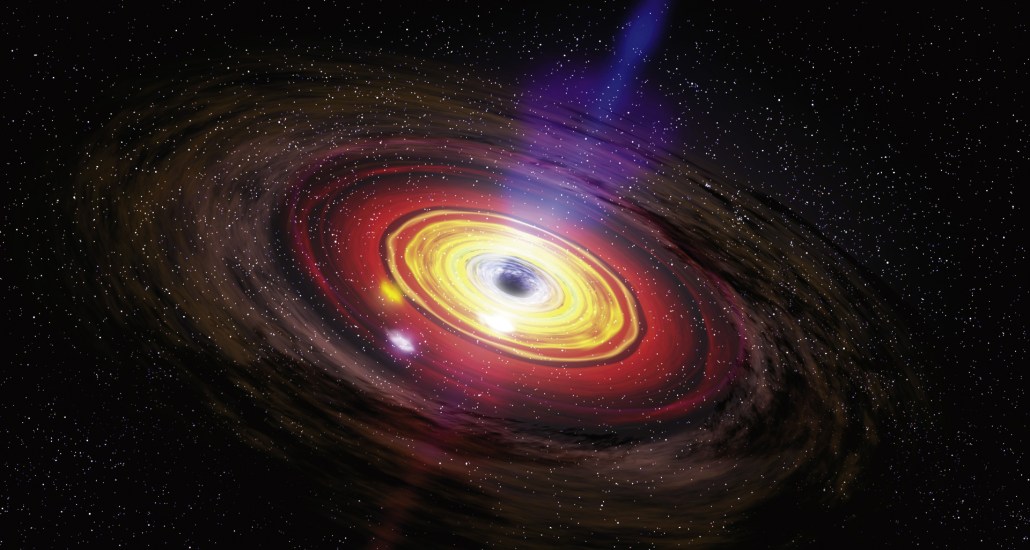Last gorge for galaxy’s central black hole gauged
Milky Way monster was 100 million times more active 2 million years ago

BIG JET The galaxy's central supermassive black hole (illustrated here with a polar jet) was once millions of times more powerful than it is today.
NASA/Dana Berry/SkyWorks Digital







